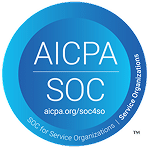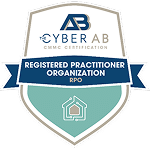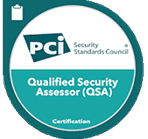Safeguarding patient information is not just a legal requirement but also a critical aspect of building trust and ensuring the integrity of healthcare services. For small to mid-sized healthcare providers, compliance with the Health Insurance Portability and Accountability Act (HIPAA) is essential to protect sensitive Protected Health Information (PHI) and uphold patient confidentiality. HIPAA compliance is more than just a regulatory obligation; it establishes a framework for safeguarding PHI from unauthorized access and breaches.
This blog explores the complex world of HIPAA compliance, offering valuable insights and practical tips to help healthcare providers deal with regulatory challenges, protect patient data, and ensure compliance with HIPAA regulations.
Understanding HIPAA Compliance
HIPAA, enacted in 1996, is a federal law that safeguards the privacy and security of patients’ medical information. It sets national standards for (PHI). It imposes strict guidelines for healthcare providers, health plans, and other entities dealing with PHI to ensure that patient data is kept confidential and secure. The law covers various aspects of healthcare operations and applies to a broad range of entities known as “covered entities” and their business associates. Covered entities consist of the following:
- Healthcare Providers: Any provider of medical or health services that transmits health information in connection with certain transactions. This includes doctors, clinics, hospitals, psychologists, chiropractors, nursing homes, pharmacies, and dentists.
- Health Plans: Any individual or group plan that provides or pays the cost of medical care. This includes health insurance companies, HMOs, company health plans, and government programs that pay for health care, such as Medicare, Medicaid, and military and veterans’ health programs.
- Healthcare Clearinghouses: Entities that process nonstandard information they receive from another entity into a standard format (or vice versa). This includes billing services, repricing companies, community health management information systems, and value-added networks.
Critical Components of HIPAA Compliance
- Privacy Rule
The Privacy Rule establishes national standards for protecting individually identifiable health information. It limits the use and disclosure of PHI without patient authorization and grants patients various rights regarding their health information, including the right to examine and obtain a copy of their health records and to request corrections.
- Security Rule
The Security Rule sets standards for protecting electronic PHI (ePHI). It requires covered entities to implement administrative, physical, and technical safeguards to ensure confidentiality, integrity, and availability. This includes access controls, encryption, and regular security assessments.
- Breach Notification Rule
The Breach Notification Rule requires covered entities and their business associates to provide notification following a breach of unsecured PHI. This includes notifying affected individuals, the Department of Health and Human Services (HHS), and, in some cases, the media and law enforcement. The rule outlines the specific requirements for breach notifications, including the timeliness and content of such notifications.
- Enforcement Rule
The Enforcement Rule sets forth the provisions relating to compliance and investigations, penalties for violations, and hearing procedures. It grants the HHS Office for Civil Rights (OCR) the authority to enforce HIPAA compliance through investigations and the imposition of civil monetary penalties.
- Omnibus Rule
The HIPAA Omnibus Rule was enacted on January 25, 2013, and it went into effect on March 26, 2013. The Omnibus Rule was a significant update to HIPAA, implementing several provisions of the Health Information Technology for Economic and Clinical Health (HITECH) Act and making other modifications to enhance privacy protections and security for health information. The Omnibus Rule implements several provisions of the HITECH Act to strengthen the privacy and security protections established under HIPAA. It includes modifications to the Privacy, Security, and Enforcement Rules to enhance the protection of health information and extends specific HIPAA provisions to business associates of covered entities.
Initial Steps to HIPAA Compliance
Conducting a Risk Assessment
- Identifying Vulnerabilities and Threats: When performing a risk assessment for PHI, it’s important to consider physical security measures, administrative policies, and technical safeguards. This includes evaluating access controls, employee training, encryption, and intrusion detection systems for all PHI access points and storage methods.
- Assessing Potential Impacts and Likelihood: After identifying vulnerabilities and threats, it is essential to assess their potential impacts and likelihood of occurring. This involves analyzing how each risk could affect PHI’s confidentiality, integrity, and availability. Prioritizing mitigation efforts based on severity and probability helps address significant threats promptly, reducing the overall risk to patient information.
Developing a HIPAA Compliance Plan
- Policies and Procedures: Develop comprehensive policies and procedures that address HIPAA requirements. These should include protocols for data access, usage, and sharing and procedures for responding to data breaches and other security incidents. Ensure that these policies are tailored to your organization’s specific needs and are regularly updated to reflect changes in technology and regulations. Policies should also cover the secure disposal of PHI and guidelines for conducting regular risk assessments.
- Roles and Responsibilities: Clearly define roles and responsibilities within your organization for HIPAA compliance. This includes identifying who manages and protects PHI and assigning specific tasks to appropriate personnel.
- Appointing a HIPAA Compliance Officer: Designate a HIPAA Compliance Officer to oversee compliance efforts. This individual (or a third-party entity) should thoroughly understand HIPAA regulations and have the authority to enforce compliance across the organization. Responsibilities include regular audits, ensuring policies are followed, staying informed about updates to HIPAA regulations, and serving as the primary point of contact for compliance inquiries or incidents.
- Training and Education: Implement a comprehensive training program to educate all employees about HIPAA requirements and the importance of protecting PHI. Regular training sessions should cover topics such as recognizing phishing attempts, properly handling PHI, and reporting suspected breaches.
- Documentation and Record-Keeping: Remember to keep detailed records of all HIPAA compliance activities, including risk assessments, training sessions, and policy updates. Proper documentation is essential for audits and tracking the organization’s progress. Store all compliance-related documents securely and make them easily accessible to authorized personnel. Covered entities and business associates must maintain documentation of their policies and procedures, as well as any communications, actions, activities, or designations required by HIPAA. These records must be kept for six years from the date of their creation or the date when they were last in effect, whichever is later.
Common HIPAA Compliance Challenges for SMBs
- Limited Resources and Budget Constraints
Many small and medium-sized healthcare providers need more resources to allocate budgets and personnel for comprehensive HIPAA compliance. The costs of implementing strong security measures and investing in advanced cybersecurity technologies can be prohibitive, leading to a reactive rather than proactive approach to compliance. This can leave providers vulnerable to breaches and their legal and financial repercussions.
- Keeping Up with Regulatory Changes
Understanding and adapting to evolving HIPAA regulations can be challenging for small and medium-sized businesses. Staying informed requires continuous education and training, which can be challenging to maintain without dedicated resources. Failure to keep up with regulatory changes can lead to outdated compliance practices and potential penalties for non-compliance.
- Balancing Compliance with Day-to-Day Operations
Healthcare providers must integrate their operational workflows with compliance requirements, such as adhering to HIPAA standards for electronic health records, appointment scheduling, billing processes, and communication methods. Small and medium-sized healthcare businesses may find it daunting to achieve this integration without disrupting workflows due to limited operational flexibility and staff having multiple roles.
Tips for Maintaining HIPAA Compliance
- Continuous Risk Management: Regular comprehensive risk assessments are needed to identify and address vulnerabilities in systems and processes, including evaluating physical, administrative, and technical safeguards. A trusted third party should conduct these assessments annually or when significant changes occur.
- Regular Reviews and Updates: Regularly review your HIPAA compliance program to update policies, procedures, and plans and seek feedback from staff for potential improvements.
- Stay Informed about HIPAA Updates: Monitor updates from the Department of Health and Human Services (HHS) and the Office for Civil Rights (OCR) to stay informed about changes to HIPAA regulations. Regularly review official guidance documents, enforcement actions, and policy updates to ensure your compliance efforts align with current requirements.
- Develop a Culture of Compliance: Ensure your organization’s leadership is committed to HIPAA compliance. This involves allocating sufficient resources, providing ongoing support for compliance initiatives, and promoting a culture of accountability and security.
- Employee Engagement: Foster a security awareness and responsibility culture to engage all employees in compliance. Encourage staff to report potential security issues and participate in regular training sessions. Recognize and reward compliance efforts to reinforce the importance of protecting PHI.








